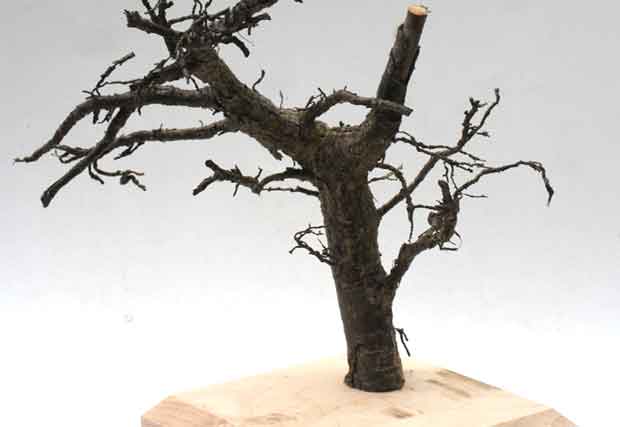
Farmhouse 1:35
The chicken coop – a farmhouse in 1:35
The accessories market offers a lot of interesting buildings for every era and every scale. Often, however, these are ruins or only parts of a house. For a “farmer diorama” I needed a complete and intact building – and therefore a self-construction was required! This farmhouse, which is a replica of a real chicken shed, was created in an easily comprehensible way. The materials used are limited to pine strips, depafit cardboard, commercially available plaster, balsa wood, plastic sheet and a little accessories from the railway range.
After a basic sketch and transfer to the Depafit carton (a foam covered with cardboard on both sides, all four walls are carefully cut out with the scalpel and the beam structure is carefully recorded.
I create the half-timbered construction from pine strips, which I cut precisely to its length and glue with white glue onthe substrate. When creating trusses, it is advisable to use original illustrations as a template.
The gaps are now carefully filled with thin-liquid plaster. Test the flowability of your plaster mixture in advance, as lumps release unsightly dents! After the plaster has been tied off and shows a certain strength, engraving can begin. The wetter the mass is, the easier it is to process and bring it into the desired shape. For engraving I use an engraving needle or a simple nail.
When all engraving work is complete, the individual walls can be glued. I fill the joints on the walls with a commercially available filler. I make the wood formwork in the gable from inscribed plastic sheet strips.
The small tool shed is also made of plastic panels. The wooden shingles on the roof are small balsa wood plates that are carefully glued side by side piece by piece. Admittedly tedious – but worthwhile!
I also make the gates and doors out of plastic. The roof on the building is a plaster cast of a roof slab from the railway accessories. Since I have other houses in the planning, a silicone molding position was offered.
The back of the chicken shed, which originally served as a house. The bay window on the roof of the building, which in turn was built of plastic, looks interesting.
I carry out the basic painting with the airbrush gun and all the subtleties and aging traces afterwards with the brush. Numerous glazing orders and dry painting treatments are necessary to give the stable a natural appearance. Special attention is paid to the quarry stone wall. Each individual stone is painted with a different color and aged accordingly. The impression of the wood in the gable, which is claimed by wind and weather, is also beautiful. On the dark brown base color, different light colours are applied in the dry painting mode until the desired effect is applied.
To make the appearance even more realistic, I sprinkle some moss from the dioramas to some places on the roof and then attach some ivy (dried natural material from the garden) to the front side. Also note the small eye-catchers, such as the bird dirt on the gable of the house! It is precisely such “little things” that make the model look alive.

Even if the construction of such a building is associated with a lot of work at first glance, it is simply fun to create something “own”. Just try it out – and you’ll find that it’s easier to
than one thinks!






























Recent Comments